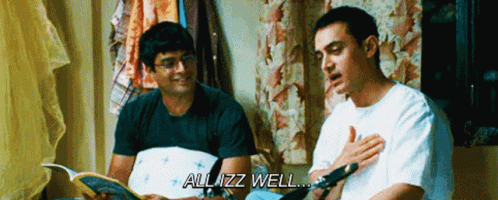Welcome to HODL.FM. The only crypto publication that has crossed vast seas and endless oceans of time’ to bring you reliable insights.

Here is April 1st. The bull run is hot. Halving is coming. Vitalik’s next steps for the Ethereum Purge. Tron’s founder faces the SEC, and finally Runes. You might be wondering where to start, this is so much, there are way too many early gems. Don’t be scared. When we break down Runes for you, everything is gonna be alright.
Related: Bitcoin Halving Event on 4/20 Again: You Know it’s Possible
All Izz Well
The Gradual Emergence of Bitcoin DeFi
Everyone is convinced inscriptions and ordinals will supercharge decentralized finance (DeFi) on Bitcoin. Early last year, inscribing data on a Satoshi (Bitcoin’s smallest unit) emerged as a viable approach for introducing NFTs and BRC-20 tokens on the largest cryptocurrency network.
After inspiring a flurry of progress and developments, the Ordinals Protocol creator, Mr Casey Rodarmor will premier a new Bitcoin token standard on 21st April to compete with BRC-20.
Introducing Runes
- A new Bitcoin standard for fungible tokens;
- Proposed in September 2023 by Casey Rodarmor;
- Praised as a better alternative for the BRC-20 standard;
- Aims to eliminate Junk UTXOs*.
Runes is promising the creation of more functionality on the Bitcoin network by enhancing the efficiency of deploying altcoins and building high-performance DApps. If successful, the protocol will be the largest fungible token standard in the Bitcoin ecosystem.
One of Runes’ founding beliefs is the desire for a protocol that contributes more transaction fees, more developers and more DEFI users to the Bitcoin network. Some of its notable features will be an intuitive user experience, simplicity, responsible UTXO management, and a low on-chain footprint.
The primary advantage of Runes against BRC-20 is responsible UTXO management.
Before a term like this leaves you skitting like a cat on hot bricks, let’s explain it.
Runes is Compatible with the UTXO
Unspent Transaction Output (UTXO) is a model by the Bitcoin Network for tracking transaction balances as they move across cryptocurrency wallets – akin to the Account/Balance model on Ethereum or EOS blockchains.
Think of UTXO like spending $80 on dinner using a $100 note. This means you will have $20 left over. On Bitcoin, the left over of $20 would become your unspent transaction output and should go back to your wallet to be spent on something else.
Also, when you gave the restaurant your $100 note – they gave you $20 back and technically removed the $100 note from circulation. The new $20 bill they gave you was entirely a new UTXO.
On Bitcoin, it means the UTXO cannot be subdivided when spending and must always be spent in full. For instance, it is impossible to send 1 BTC unspent transaction output from your 5 BTC UTXO. Instead, the network takes the entire 5 BTC UTXO and generates a new output worth 4 BTC for you without incurring additional gas fees.
This also means you cannot give the restaurant the $100 note, and then give it to someone else.
Kudos to Adam, Hal and Satoshi
Such a genius model right up there. All credits go to Software engineers Adam Back and deceased Hal Finney who separately worked on the Model between 1997 and 2004. Then Satoshi would later adopt the method for solving the double spend problem on Bitcoin, making it the first operational digital currency platform to execute transactions using UTXO.
Runes Solves BRC-20’s Issue of Junk UTXOs
Now that you understand the concept behind unspent change on Bitcoin, it will be easier to explain the downsides of BRC-20 compared to the upcoming Runes Protocol.
For the first time in history, developers could deploy fungible tokens on Bitcoin when Domo, a pseudonymous developer launched the BRC-20 token standard in March 2023.
Interestingly, the protocol’s ecosystem soared to a market valuation of $1 billion in only 3 months of existence. But there was a disadvantage, a worrying one. Despite the standard making it possible to create Bitcoin fungible tokens, it also led to overproduction of waste UTXOs thereby clogging the network.
Through Runes, Radmor introduces a novel approach for assigning the smallest Bitcoin unit (or satoshi)to a unique token identifier. Coupled with other cryptographic engineering best practices, the new token standard will offer an efficient way of utilizing the Bitcoin network, eliminating the need for extra data storage as well as junk UTXOs.
According to Ordinals.com, Runes are ‘etched’ unlike Ordinals which are inscribed. While Ordinals are not interchangeable due to their uniqueness, each Rune unit is the same and transferable. The etcher, the person who etchs a rune token on Bitcoin can premine a certain token allocation for themselves before a public mint.
For one to create and deploy a new Rune token, one will start by defining the symbol, token supply, and the amount of decimals. One can create any amount of Runes, whether they want a million, billion, or less.
More Info on Bitcoin:
- Bitcoin Bounces Back to Record Price Levels
- What Determines the Price of Bitcoin?
- What Does Spot Bitcoin ETF Mean for Investors?
Radmor timed the launch of Runes to coincide with the 4th Bitcoin halving event which is expected to take place on 20th April 2024.
Disclaimer: All materials on this site are for informational purposes only. None of the material should be interpreted as investment advice. Please note that despite the nature of much of the material created and hosted on this website, HODL.FM is not a financial reference resource and the opinions of authors and other contributors are their own and should not be taken as financial advice. If you require advice of this sort, HODL.FM strongly recommends contacting a qualified industry professional.



